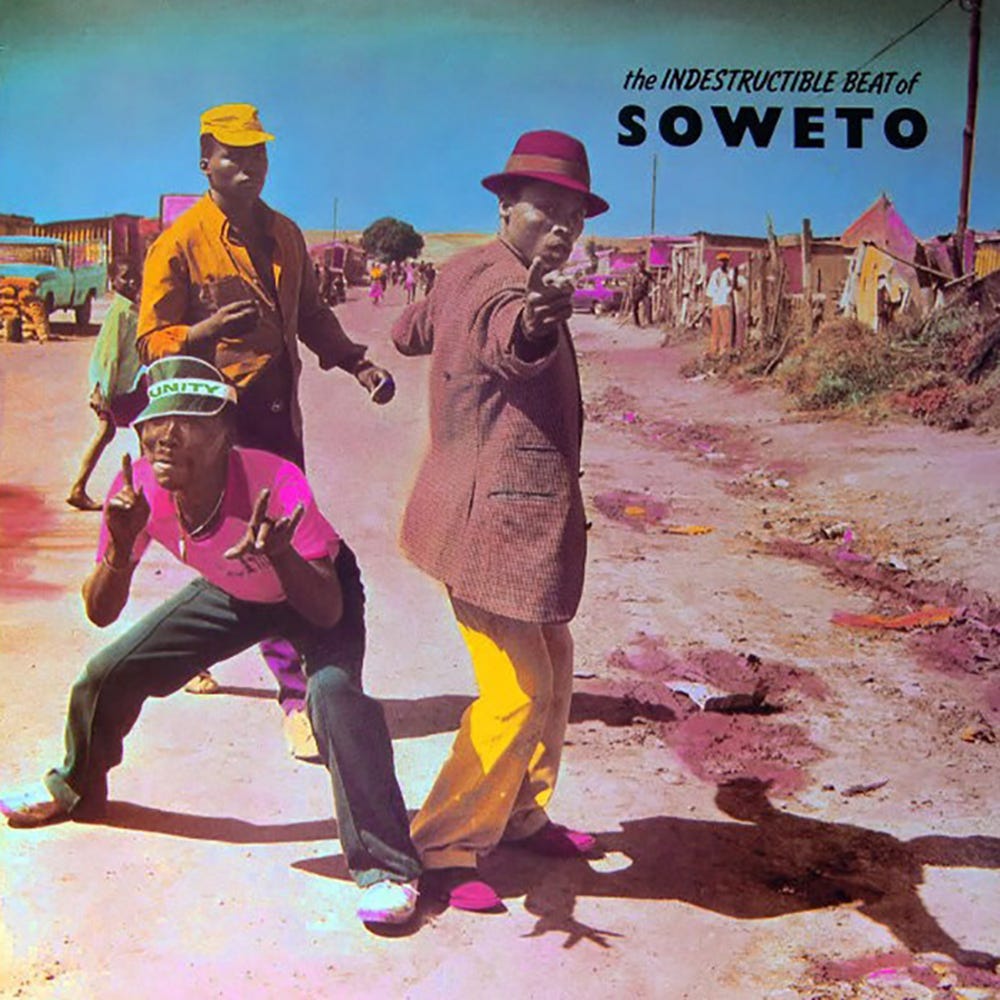The 1985 Project Part 42: The Indestructible Beat of Soweto
This compilation had a major impact on my listening habits
For those who missed last week’s post, I’m continuing my look back at albums from 1985 by using the ones on Brad Luen’s wonderful Semipop Life reader’s poll for that year published a couple months ago. This week’s album finished fourth in that poll, but we already covered Tim by the Replacements in this space.
Things I misremembered about The Indestructible Beat of Soweto
· What year it came out – it qualifies for the 1985 project because the original Earthworks release in England appeared that year. I didn’t hear it until 1986 when it was released in America on the Shanachie label.
· The multiple musical styles on the record – I thought it was pretty much mbaqanga all the way, but there is a lot of variety among the twelve tracks even above and beyond the inclusion of acapella group Ladysmith Black Mambazo. There are tracks with violins, there are tracks with speedy liquid guitar filigrees, there are tracks with different vocal approaches.
· The number of South African musicians whose names I recognize – There is Mahlathini and there is Ladysmith Black Mambazo. The rest did not go on to get albums released on American labels. Several tracks are produced by West Nkosi, who was associated with the two artists I just mentioned and who was probably the most famous producer and saxophonist from South Africa in the 80s.
I do remember this record played an important role in my musical education over and above the sheer entertainment and enjoyment it provided. I had been dipping my toes into African music for a few years by the time I heard The Indestructible Beat. I had read a book called Black Music of Two. Worlds by John Storm Roberts which made me curious about the music of that continent and its connection sto the music I knew from America, England, and Jamaica. There was a compilation album related to that book called Africa Dances which offered tantalizing glimpses into musical styles I had never encountered before. And there was the WOMAD festivals I read about in music magazines, and the essential two record set associated with that organization, Music and Rhythm, which gave Africa and its influences the largest part of a trip around the world’s styles. Somewhere in there were a couple of King Sunny Ade albums that were getting pushes from Island Records.
Meanwhile, I was starting to learn about how the country of South Africa was treating its citizens abominably. I couldn’t believe there was a system of apartheid that was given the rule of law in that nation. Songs about South African activist Steve Biko by Sweet Honey in the Rock and Peter Gabriel opened my eyes to the situation. Then the Special AKA came out with “Free Nelson Mandela” and I wanted to learn even more. I read books on South Africa, and I realized this world had horrors I hadn’t imagined. Of course, we’ve already covered the Artists United Against Apartheid “Sun City” record in this series.
But I hadn’t actually heard any music from the people who were being oppressed. That’s what The Indestructible Beat of Soweto provided for me. Of course, the musicians and singers were living better than the thousands of people forced into resettlement camps. But they were there in that country, dealing with legal prejudice every day. And they were offering up a fighting spirit in their music that sounded like freedom, that uplifted anybody who heard it. Yes, there is an element of projection in my reaction to the music – I was never there, I didn’t and don’t understand the words, I know these songs existed in a pop context. But the music feels like the title says – there is an indestructible human vitality that can and will overcome. I mean, it helps that we were only a few years away from the world’s contempt for apartheid helped bring about its end.
The songs on this album are all excellent, with top honors going to Nelcy Sedibe doing “Holotelani” and Umahlathini Nabo doing “Qhude Manikini.” Umahlathini Nabo, by the way, has a vocalist that sounds to me like Mahlathini himself but I’m not good enough at google to find out more about that artist. The music – again with Ladysmith Black Mambazo serving as a musical exception – is all built on catchy call and response vocals over spirited, energetic rhythms played mostly on guitars, bass, and drums.
This deserves 9 points out of 10.
PS: Though it didn’t place in the 1985 Village Voice Pazz and Jop Poll, The Indestructible Beat of Soweto came in 10th place the next year. What was number one that year? A record that brought South African music its largest audience ever, Paul Simon’s Graceland.

